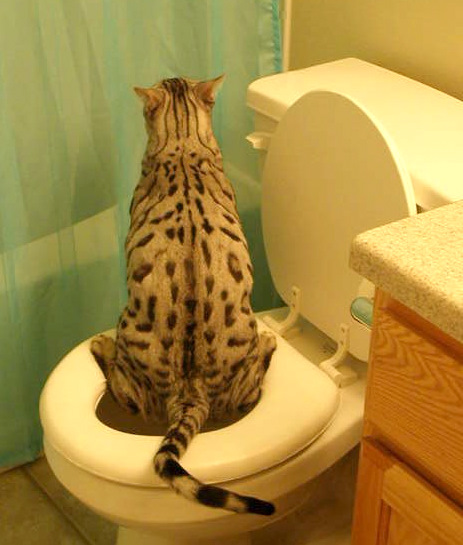Are you hunting for critical information Can You Flush Cat Poo or Litter Down the Toilet??

Introduction
As cat proprietors, it's vital to be mindful of how we dispose of our feline friends' waste. While it may appear practical to flush pet cat poop down the commode, this technique can have destructive consequences for both the atmosphere and human wellness.
Alternatives to Flushing
Fortunately, there are much safer and much more liable ways to take care of cat poop. Think about the adhering to choices:
1. Scoop and Dispose in Trash
The most common technique of disposing of feline poop is to scoop it right into an eco-friendly bag and toss it in the garbage. Make sure to use a devoted litter scoop and deal with the waste quickly.
2. Use Biodegradable Litter
Choose naturally degradable cat trash made from materials such as corn or wheat. These litters are eco-friendly and can be securely disposed of in the trash.
3. Bury in the Yard
If you have a yard, think about burying feline waste in a designated location away from vegetable yards and water sources. Make sure to dig deep enough to avoid contamination of groundwater.
4. Mount a Pet Waste Disposal System
Purchase a pet dog waste disposal system particularly made for cat waste. These systems utilize enzymes to break down the waste, lowering odor and environmental effect.
Wellness Risks
Along with environmental issues, purging cat waste can likewise present health and wellness threats to human beings. Feline feces may include Toxoplasma gondii, a parasite that can trigger toxoplasmosis-- a potentially serious illness, particularly for expectant females and people with damaged body immune systems.
Ecological Impact
Purging cat poop introduces harmful pathogens and bloodsuckers into the supply of water, posing a substantial threat to marine environments. These contaminants can negatively influence marine life and compromise water top quality.
Conclusion
Liable pet dog ownership expands beyond supplying food and shelter-- it likewise includes correct waste administration. By avoiding flushing feline poop down the commode and selecting different disposal techniques, we can minimize our environmental footprint and shield human health and wellness.
Why Can’t I Flush Cat Poop?
It Spreads a Parasite
Cats are frequently infected with a parasite called toxoplasma gondii. The parasite causes an infection called toxoplasmosis. It is usually harmless to cats. The parasite only uses cat poop as a host for its eggs. Otherwise, the cat’s immune system usually keeps the infection at low enough levels to maintain its own health. But it does not stop the develop of eggs. These eggs are tiny and surprisingly tough. They may survive for a year before they begin to grow. But that’s the problem.
Our wastewater system is not designed to deal with toxoplasmosis eggs. Instead, most eggs will flush from your toilet into sewers and wastewater management plants. After the sewage is treated for many other harmful things in it, it is typically released into local rivers, lakes, or oceans. Here, the toxoplasmosis eggs can find new hosts, including starfish, crabs, otters, and many other wildlife. For many, this is a significant risk to their health. Toxoplasmosis can also end up infecting water sources that are important for agriculture, which means our deer, pigs, and sheep can get infected too.
Is There Risk to Humans?
There can be a risk to human life from flushing cat poop down the toilet. If you do so, the parasites from your cat’s poop can end up in shellfish, game animals, or livestock. If this meat is then served raw or undercooked, the people who eat it can get sick.
In fact, according to the CDC, 40 million people in the United States are infected with toxoplasma gondii. They get it from exposure to infected seafood, or from some kind of cat poop contamination, like drinking from a stream that is contaminated or touching anything that has come into contact with cat poop. That includes just cleaning a cat litter box.
Most people who get infected with these parasites will not develop any symptoms. However, for pregnant women or for those with compromised immune systems, the parasite can cause severe health problems.
How to Handle Cat Poop
The best way to handle cat poop is actually to clean the box more often. The eggs that the parasite sheds will not become active until one to five days after the cat poops. That means that if you clean daily, you’re much less likely to come into direct contact with infectious eggs.
That said, always dispose of cat poop in the garbage and not down the toilet. Wash your hands before and after you clean the litter box, and bring the bag of poop right outside to your garbage bins.
https://trenchlesssolutionsusa.com/why-cant-i-flush-cat-poop/

Do you enjoy reading up on How to Dispose of Cat Poop and Litter Without Plastic Bags? Create feedback below. We will be pleased to listen to your reactions about this page. In hopes that you come back again before long. Loved our blog posting? Please share it. Help another person find it. I praise you for your time. Visit again soon.
Call Today